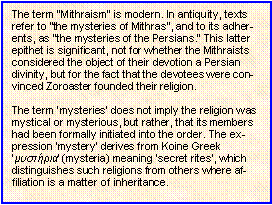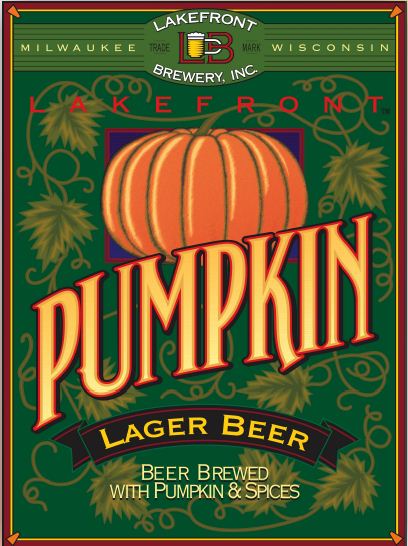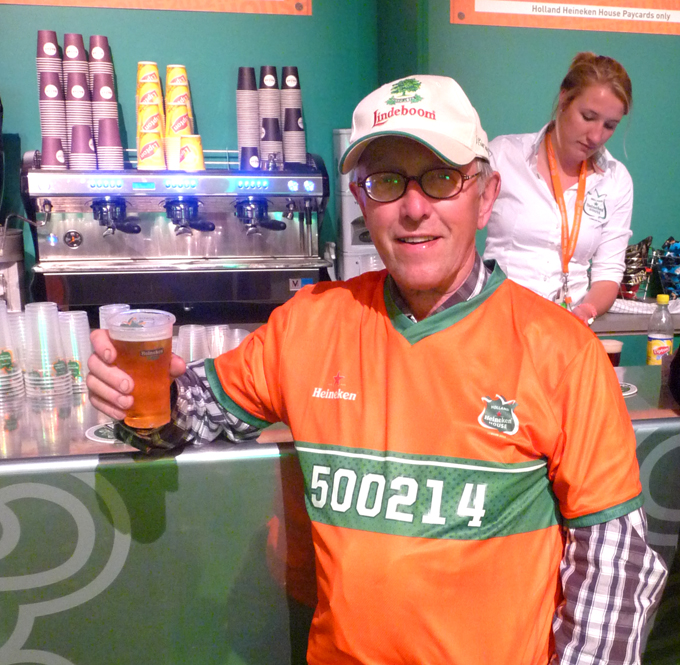Revolución Bolivariana, también conocida como Revolución venezolana, es el nombre dado en Venezuela, por Hugo Chávez (1954-2013) y sus partidarios, al proyecto ideológico y social que comienza en 1999, con la elección de Chávez como presidente del país.
Según sus partidarios, la revolución está basada en el ideario del libertador Simón Bolívar, en las doctrinas de Simón Rodríguez, quien proponía que Latinoamérica inventase su propio sistema político, y el General Ezequiel Zamora"Tierras y Hombres Libres" y "Horror a la Oligarquía", quien defendía la tenencia de la tierra para los campesinos que la trabajaban. Tiene como fin llegar a un nuevo socialismo. Una de sus primeras medidas fue el aprobar mediante referéndum popular la constitución de 1999.
Las reformas llevadas a cabo en el marco de la Revolución Bolivariana, ha derivado en la polarización política de la sociedad venezolana, hacia posiciones irreconciliables, lo que ha llevado en algunos casos a situaciones de violencia.
Según el discurso pronunciado y propuesto por el gobierno como una definición en el XVI Festival de la Juventud y los Estudiantes (FMJE) expresa que es el tránsito y evolución de cuatro macrodinamicas autoimpuestas:
- La revolución antiimperialista.
- La revolución democrática-burguesa.
- La contrarrevolución neoliberal.
- La pretensión de llegar a una sociedad socialista del siglo XXI.
Esto afecta de forma directa o indirecta a grupos de personas y empresas, algunas personas creen que a gobiernos también. Existen muchos puntos de vista al respecto dentro y fuera del país producto de la desinformación y el fanatismo de las partes en conflicto. Se cree que la vía autoinducida se encuentra en un estado de «no retorno».
Los detractores más moderados opinan que este proceso es necesario para el correcto desarrollo del país pero critican el método utilizado por el grupo de gobierno. En líneas generales el flujo de opiniones, poco o medianamente documentadas generan desestabilización en grupos fanáticos de las partes en disputa.8 Este movimiento ha sido tomado como bandera en países de la región contagiándose la misma conflictividad (https://es.wikipedia.org/wiki/Revoluci%C3%B3n_bolivariana).
Hugo Rafael Chávez Frías (Sabaneta, 28 juli 1954 – Caracas, 5 maart 2013) was van 1999 tot zijn overlijden in 2013 de president van Venezuela namens de Socialistische Partij van dat land. Voorheen was hij de leider van de Beweging van de Vijfde Republiek vanaf haar oprichting in 1997 tot 2007, toen hij de leider werd van de Verenigde Socialistische Partij van Venezuela. Hij volgde zijn eigen politieke ideologie genaamd het bolivarisme en socialisme van de 21ste eeuw, hij heeft vele socialistische hervormingen in zijn land ingevoerd als onderdeel van de Bolivariaanse Revolutie, hij heeft dit gedaan door een nieuwe grondwet te creëren, participatieve democratische raden in te voeren en de nationalisatie van een aantal belangrijke industrieën.
Chávez groeide op in een leraarsgezin, en werd beroepsmilitair. Uit onvrede over het puntofijismo, het Venezolaans politiek systeem, dat hij corrupt en ondemocratisch vond, richtte hij begin jaren tachtig de ondergrondse Revolutionaire Bolivariaanse Beweging-200 (MBR-200) op, om het puntofijismosysteem omver te werpen. Nadat de Democratische Actie-regering van president Carlos Andrés Pérez de gewelddadige onderdrukking beval van protesten tegen bezuinigingen, leidde Chávez de MBR-200 die een mislukte staatsgreep tegen de regering in 1992 pleegde, waarvoor hij werd opgesloten in de gevangenis.
Toen hij na twee jaar vrijkwam, richtte hij een sociaaldemocratische politieke partij op, de Beweging van de Vijfde Republiek, en in 1998 werd hij verkozen tot president van Venezuela. Vervolgens introduceerde hij een nieuwe grondwet waarin minderheidsgroepen meer rechten kregen en hij veranderde de structuur van de Venezolaanse regering. Hij werd in 2000 herkozen. Tijdens zijn tweede presidentiële termijn, introduceerde hij een systeem van Bolivariaanse missies, gemeenteraden en door de werknemer beheerde coöperaties, evenals een programma van landhervormingen, terwijl hij ook diverse belangrijke industrieën nationaliseerde. De oppositie, die hem inmiddels verweet een populist te zijn die de democratie aan het uithollen was en in toenemende mate autoritair, probeerde hem uit de macht te zetten, zowel door middel van een mislukte militaire coup in 2002 als door een referendum in 2004. In 2005 verkondigde Chávez openlijk zijn trouw aan het socialisme, en hij werd in 2006 opnieuw tot president gekozen, waarop hij in 2007 zijn nieuwe politieke partij, de Verenigde Socialistische Partij van Venezuela, oprichtte. Hoewel Chávez in 2011 aan kanker leed, verklaarde hij dat hij opnieuw verkiesbaar zou zijn als president bij de presidentsverkiezingen in 2012 (https://nl.wikipedia.org/wiki/Hugo_Ch%C3%A1vez).
Hij was een zelfverklaard anti-imperialist en een luidruchtig tegenstander van het neoliberalisme en het kapitalisme in het algemeen. Chávez was ook een tegenstander van het buitenlands beleid van de Verenigde Staten. Hij had een bondgenootschap met de socialistische regeringen van Fidel en Raúl Castro in Cuba, Evo Morales in Bolivia, Rafael Correa in Ecuador en Daniel Ortega in Nicaragua. Zijn presidentschap werd gezien als een onderdeel van de Draai naar Links in Latijns-Amerika. Hij steunde Latijns-Amerikaanse en Caribische samenwerking en hij was medeoprichter van de Unie van Zuid-Amerikaanse Naties, de Bolivariaanse Alliantie voor de Amerika's, de Bank van het Zuiden, en het regionale televisie-netwerk TeleSUR. Hij was een zeer controversieel en verdeeldheid zaaiend figuur in zowel het binnenland als in het buitenland, zijn politieke invloed in Latijns-Amerika bracht Time ertoe om hem in de lijst van 's werelds 100 meest invloedrijke mensen op te nemen zowel in 2005 als in 2006 (https://nl.wikipedia.org/wiki/Hugo_Ch%C3%A1vez).
Bolivariaanse Revolutie , ook wel bekend als de Venezolaanse Revolutie is de naam die in Venezuela van Hugo Chavez (1954-2013) en zijn aanhangers, de ideologische en sociale project dat begon in 1999 met de verkiezing van Chavez als president.
Volgens haar supporters, is de revolutie op basis van de ideeën van de bevrijder Simon Bolivar, in de leerstellingen van Simon Rodriguez , die voorgesteld dat Latijns-Amerika uitgevonden zijn eigen politieke systeem, en General Ezequiel Zamora "Land en Vrije Mannen" en "Horror aan oligarchie" die het land tenure verdedigd voor de boeren die het werkte. Het is de bedoeling om een nieuwe te bereiken socialisme . Een van zijn eerste daden was goed te keuren via een referendum de grondwet van 1999 .
...
Zijn beleid werd genoemd Bolivariaanse Revolutie, want het is sterk afhankelijk van de steun van de bevolking en dat het integratiebeleid van de fundamentele democratische elementen die het fundamentele concept van bolivarianismo, in 2000 Hugo Chavez uitgenodigd de vorming van zogenaamde Bolivariaanse cirkels , en erkende de toenmalige vice-president Diosdado Cabello financieel te steunen deze formaties. Bovendien, door 2005 de cirkels zijn goedgekeurd.
De cirkels moeten gedecentraliseerd worden, georganiseerd in buurten en, ondanks zijn afkomst, autonoom moeten zijn, om de Bolivariaanse ideeën om de bevolking te brengen en vormen een forum voor een effectieve samenwerking, met name in de sociale werking van wederzijdse hulp. In tegenstelling tot, bijvoorbeeld, buurtverenigingen, zijn autonomie was niet beperkt tot de lokale politiek, maar ook werden uitgedrukt in de nationale politieke vraagstukken
...
De Bolivariaanse Revolutie onder meer de opstelling van een nieuwe grondwet, de regering genaamd "Bolivariaanse grondwet 'die zou worden goedgekeurd een referendum , waarin vijf gedefinieerd overheid : de uitvoerende , wetgevende, rechterlijke macht , electorale en burger. De officiële naam van het land werd ook veranderd naar Bolivariaanse Republiek Venezuela (https://es.wikipedia.org/wiki/Revoluci%C3%B3n_bolivariana).
Ezequiel Zamora (Cúa, Miranda, 1 de febrero de 1817 - San Carlos, Cojedes, 10 de enero de 1860) fue un militar y político venezolano, uno de los principales protagonistas de la Guerra Federal (1859-1863), líder radical que propugnaba una extensa reforma agraria a favor de los campesinos (https://es.wikipedia.org/wiki/Ezequiel_Zamora).
Simón José Antonio de la Santísima Trinidad Bolívar Palacios Ponte y Blanco, conocido como Simón Bolívar, (Caracas, Capitanía General de Venezuela, 24 de julionota 1 3 de 1783—Santa Marta, Colombia, 17 de diciembre de 1830) fue un militar y político venezolano, fundador de las repúblicas de Colombia y Bolivia. Fue una de las figuras más destacadas de la emancipación americana frente al Imperio español y contribuyó de manera decisiva a la independencia de las actuales Bolivia, Colombia, Ecuador, Panamá, Perú y Venezuela (https://es.wikipedia.org/wiki/Sim%C3%B3n_Bol%C3%ADvar).
All who have served the Revolution have plowed the sea.
Statement written in his final days, as quoted in Simón Bolívar : A Story of Courage (1941) by Elizabeth Dey Jenkinson Waugh, p. 320; These are sometimes said to have been repeated many times while he was dying, and to be his last words.
Variant translations or reports:
America is ungovernable; those who served the revolution have plowed the sea.
As quoted in Man, State, and Society in Latin American History (1972) by Sheldon B. Liss and Peggy K. Liss, p. 133
Those who have served the cause of the revolution have plowed the sea.
(https://en.wikiquote.org/wiki/Sim%C3%B3n_Bol%C3%ADvar)
A state too expensive in itself, or by virtue of its dependencies, ultimately falls into decay; its free government is transformed into a tyranny; it disregards the principles which it should preserve, and finally degenerates into despotism. The distinguishing characteristic of small republics is stability: the character of large republics is mutability.
Letter from Jamaica (Summer 1815)
Among the popular and representative systems of government I do not approve of the federal system: it is too perfect; and it requires virtues and political talents much superior to our own.
Letter from Jamaica (Summer 1815)
The three greatest fools (majaderos) of history have been Jesus Christ, Don Quixote — and I!
As quoted in Simón Bolívar and Spanish American Independence, 1783-1830 (1968) by John J. Johnson and Doris M. Ladd, p. 115
Simón José Antonio de la Santísima Trinidad Bolívar y Palacios, of kortweg Simón Bolívar (Caracas, 24 juli 1783 – Santa Marta, 17 december 1830) was een Zuid-Amerikaanse vrijheidsstrijder. Hij stond aan de wieg van de landen Panama, Colombia, Ecuador, Peru, Venezuela en Bolivia. Dat laatste land is naar hem genoemd.
Tegenwoordig staat hij in Latijns-Amerika nog steeds bekend als El Libertador, ofwel De Bevrijder.
Hugo Chávez, voormalig president van Venezuela, refereerde vaak aan Simón Bolívar en noemde zijn beleid de Bolivariaanse Revolutie (https://nl.wikipedia.org/wiki/Sim%C3%B3n_Bol%C3%ADvar).
“The Liberator,” which premiered in Venezuela on Thursday, July 24, will open in the U.S. on August 22. The movie narrates the life of Simon Bolivar, one of South America’s most important heroes during the 19th century independence wars against the Spanish Empire.
...
In spite of its success, ‘The Liberator’ has caused controversy. Ramirez has remarked how Bolivar’s image and legacy “has been utilized by the Latin American right and left for several years.” He added that the late-Hugo Chavez of Venezuela was “obsessed’ with Bolivar. While actors usually try to stay away from politics when promoting a film, Ramirez has been outspoken about his beliefs.
A fellow actor, Roque Valero, in turn critiqued Ramirez’s remarks. He tweeted that “Chavez did not speak about Bolivar obsessively, he simply taught us to be Bolivarians and that cannot be matched with special effects.” ....The movie’s ending has also been critiqued. Instead of Bolivar dying due to sickness (either tuberculosis or breathing problems), he is murdered by a group of conspirators. (PUBLICADO: AUG, 8, 2014 11:00 AM EST, www.laopinion.com/the-liberator-film-about-simon-bolivar-to-open-in-the-us).
Bolívar werd geboren op 24 juli 1783 te Caracas (in het huidige Venezuela) in het toenmalige Nieuw-Granada. Hij was telg uit een aristocratische criollo-familie, oorspronkelijk afkomstig uit het Baskische Bolibar. De achternaam Bolívar stamt af van de naam van dat dorp. In de zestiende eeuw vestigde de familie zich in Venezuela.
In januari 1786, Bolívar was toen twee jaar oud, overleed zijn vader aan tuberculose. Zijn moeder overleed op 6 juli 1792, toen Bolívar bijna negen was. Dankzij het fortuin dat zijn ouders nalieten kon Bolívar toch goed onderwijs genieten - van privé-docenten - en kon hij in 1799 naar Spanje reizen om zijn opleiding voort te zetten.
In 1802 trouwde hij in Spanje met María Teresa Rodríguez del Toro y Alaysa, maar tijdens een kort bezoek aan Venezuela in 1803 bezweek zij aan de gele koorts. Bolívar keerde in 1804 terug naar Europa, waar hij enige tijd deel uitmaakte van het gevolg van Napoleon. In die periode (in 1807 te Cádiz in Spanje) trad hij toe tot de vrijmetselarij.
In 1807 keerde Bolívar terug naar Venezuela, nadat Napoleon diens oudere broer Jozef Bonaparte had benoemd tot koning van Spanje en de Spaanse koloniën. Bolívar maakte in Venezuela deel uit van de verzetsbeweging tegen Spanje.
...
In 1812 schreef hij het Manifiesto de Cartagena (Cartageens Manifest), tijdens zijn verblijf in Cartagena, in het huidige Colombia, waarheen hij was gevlucht, nadat Francisco de Miranda zich in juli van dat jaar te Caracas had overgegeven aan de Spanjaarden.
In 1813 leidde hij een invasie in Venezuela. Op 23 mei arriveerde hij in Mérida, waar hij zijn bijnaam El Libertador ("De Bevrijder") kreeg. Op 6 augustus 1813 veroverde hij Caracas, en werd de republiek Venezuela uitgeroepen. Vervolgens trok Bolívar naar Colombia, waar hij de nationalisten aanvoerde en waar hij in 1814 Bogota veroverde. In de periode daarna leed Bolívar een aantal militaire nederlagen. Dat dwong hem ertoe om in 1815 naar Jamaica te gaan, waar hij hulp vroeg aan de Haïtiaanse president Alexandre Pétion. Van Pétion kreeg hij financiële en morele steun bij de uitrusting van een invasievloot om de opstand tegen Spanje voort te zetten. Als enige tegenprestatie verlangde Pétion de afschaffing van de slavernij in Venezuela. Met Haïtiaanse ondersteuning en de hulp van de llanero José Antonio Páez wist Bolívar vanaf 1816 weer de nodige gebieden te veroveren.
In 1819 kon heel Colombia gevoegd worden bij het gebied dat niet meer onder Spaanse controle stond. In december van dat jaar riep Bolívar de Republiek van Groot-Colombia uit: een federatie die grote delen van het huidige Venezuela, Colombia, Panama en Ecuador omvatte. Bolívar zelf werd president.
In de jaren twintig van de 19e eeuw verlegde Bolívar zijn activiteiten naar Peru en Bolivia. Hij werd in 1824 president van Peru (zijn officiële titel was die van dictador, ofwel "dictator", waarmee werd aangegeven dat hij zowel de politieke als de militaire leiding had), en leidde de strijd tegen de Spanjaarden om hen ook uit dat land te doen terugtrekken. In augustus 1825 werd ter ere van Bolívar de Republiek Bolivia naar hem genoemd.
...
In 1827 viel de Republiek van Groot-Colombia uiteindelijk toch uit elkaar. Bolívar trad terug als president in 1828.
Bolívar stierf op 17 december 1830 in het Colombiaanse Santa Marta op het landgoed, thans museum, Quinta de San Pedro Alejandrino, waarschijnlijk aan tuberculose. Hugo Chávez, president van Venezuela, gaf in juli 2010 opdracht om Bolívars graf te openen, om zijn veronderstelling te staven dat Bolívar niet aan tuberculose overleed maar werd vermoord.
(https://nl.wikipedia.org/wiki/Sim%C3%B3n_Bol%C3%ADvar)
As for the aforementioned references to the late Chavez, he was a well-known fan of Bolivar. In 2010 he took the very controversial decision of exhuming Bolivar’s body to determine how he died in 1830.
It is generally accepted that Bolivar died of tuberculosis. However, some people, including the late Venezuelan leader, believe that he was murdered. Ultimately, a 2012 report by the doctors who examined Bolivar’s remains determined that he had died of chronic breathing problems, not tuberculosis (nor was he murdered) (www.laopinion.com/the-liberator-film-about-simon-bolivar-to-open-in-the-us).
Eine Gruppe von lateinamerikanischen Aktivisten und Menschenrechtsverteidiger hat ein innovatives Produkt, das eine neue Wendung zu der Art, wie Menschen konsumieren Bier in Europa geben, erstellt. Unter dem Motto “Wir haben das Unmögliche zu tun, weil die Möglichkeit von täglichen jeder getan” (wir haben das Unmögliche möglich zu machen, weil jeder kümmert sich täglich), ist, die Bolivariana Bier, um Mittel zur Unterstützung von Projekten zu erhöhen angeboten Organisationen und / oder ländlichen Gemeinden in Lateinamerika und der Karibik. Es ist aus diesem Grund, dass Bolivariana Bier verwendet das Bild des Simón Bolívar in Zivil Charakterisierung der lateinamerikanischen Bauern Illustration wurde von kolumbianischen Künstler im Exil Gustavo Hue gemacht.
Bier Bolivariana ist soziale Alternative zu traditionellen Biere, die den traditionellen Förderung von Bier in Lateinamerika mit sexistischen Konzepten, die die Rolle der Frauen in der Gesellschaft zu verwischen zu ändern, zusätzlich soll der Kampf und die Würde der lateinamerikanischen Bauernstand und erheben endogene lokale Entwicklung Alternativen aus denselben Gemeinden erzeugt, wie es auf ihrer Website heißt es: http://www.cervezabolivariana.com, die die Kultur der Ikonographie und der harten Arbeit der Bauern und die schwarzen und indigenen Gemeinschaften hebt ihrem Hoheitsgebiet.Bolivarische Brew ist eine Qualität vergleichbar mit den besten Biere in Belgien gebraut, das in zwei Formen kommt: Bolivariana Brown mit 8 von Alkohol und einem weichen aromatisierte gerösteter Gerste, braunem Zucker und den besten Hopfen; und Bolivariana Blond mit 5,9 ° aus einer Vielzahl von Hopfen und Malz, die eine besondere Note zu geben Durst gemacht.
Dies ist das erste Projekt der NGO Lateinamerika Solidarität Trade – LAST, dass die vom Verkauf dieses Bier und anderen Produkten im Rahmen des Solidaritätshandelssystem erwirtschafteten Mitteln werden Projekte der endogenen Entwicklung der lateinamerikanischen Bauerngemeinschaften zu unterstützen. Zusätzlich wird LAST Netzwerk zur Förderung der Bolivarischen Bier, das als Netzwerk von Bauernorganisationen in Lateinamerika und der Karibik, NGOs, sozialen Organisationen und kleine Unternehmen, die Bier Bolivariana verkaufen soll. Mit diesem Netzwerk ist es, einen Raum, in dem jedes Mitglied des Netzwerks entweder vorteilhaft oder Vermarkter kennen die Projekte, die sie finanziert werden Bolivariana Bier erstellen. Ebenso, wenn Bolivariana Bier Fonds ein Projekt, alle Mitglieder des Netzwerks haben die Wertschätzung für die Unterstützung. Http://www.cervezabolivariana.com/bolivariana.html: lateinamerikanischen und europäischen sozialen Organisationen können an das Netz der Bier Bolivariana über diesen Link registrieren (http://lainfo.es/de/2015/03/17/bolivariana-eine-partnerschaft-fur-bier-in-der-europaischen-markt/, http://lainfo.es/en/2015/03/17/bolivariana-a-partnership-for-beer-is-launched-in-the-european-market/).
Zoals deze reclame's met den traditionellen Förderung von Bier in Lateinamerika mit sexistischen Konzepten:
Nu is mijn Spaans en mijn Duits überhaupt verre van bueno. Dus dat wordt maar weer googlen-vertalen...of niet? Op www.cervezabolivariana.com/ lees ik echter gelukkig dan weer Engelse teksten...:
BOLIVARIANA beer is a project of solidarity trade of Latin America Solidarity Trade – LAST, a non-profit European organization founded by Latin Americans for Latin Americans. BOLIVARIANA beer expects to be a product marketed in several social, cultural and political events in Europe. We do not expect to compete with big trademarks; we only try to offer an alternative beer to the costumers who like to attend these events with assurance that with each BOLIVARIANA beer drunk, LAST will send a percentage of its cost to peasant organizations in America Latina and the Caribbean supporting processes of endogenous development (www.cervezabolivariana.com/about-us.html).
Ze hebben ook een FBpagina:
Begindatum
Opgericht in op 17 december 2014
Adres
1180 Brussels Hoofdstedelijk Gewest
Korte beschrijving
Pagina oficial de Cerveza Bolivariana.
Lange beschrijving
"THE BEER FOR PEOPLE WHO DO THE IMPOSSIBLE"
This is a project of Latin America Solidarity Trade (LAST) - Belgium, which wants to fund peasant projects in Latin America and the Caribbean.
Whenever you drink Bolivariana beer, you will support productive, educative and communicative projects of peasant organizations in Latin America and the Caribbean.
"LA CERVEZA PARA LA GENTE QUE HACE LO IMPOSIBLE"
Este es un proyecto de Latin America Solidarity Trade (LAST) - Bélgica, que busca financiar proyectos campesinos en Latino America y el Caribe (www.facebook.com/cervezabolivariana/info?tab=page_info).
Ze hebben ook een LAST-website:
Latin America Solidarity Trade
Supporting endogenous development
What We Do?
We support endogenous development in rural communities from Latin America and The Caribbean throught our three strategic programas:
service 1 Research for peasant empowering Community Based Research, applied reseach and rural innovation
service 2 Knowledge sharing Technologies and tools for improving participatory processes
service 3 Solidarity Trade Trade of goods to support peasant communities
See our current projects:
Projects created, designed, implemented and evaluated by communities and supported by your solidarity.
- project 1 BOLIVARIANA Beer
(Peasants of the region of Sumapaz in Colombia enjoying BOLIVARIANA beer)
Who are we?
We are a group of social entrepreneurs, which has been working with peasant organizations in Latin America (http://www.lastrade.org/).
Maar even terug naar www.cervezabolivariana.com/about-us.html:
BOLIVARIANA is not an ordinary product; it takes the image of Simón Bolívar, dressed as a peasant, as a political symbol of the struggle for the democracy and alternative development of the people in Latin America and the Caribbean. We completely isolate us from the strongly adopted vision in Latin America for promoting the beer with sexist stereotypes, and we promote our trade mark as a symbol of struggle and dignity of the Latin American people. That is why the slogan of BOLIVARIANA is “For people who do the impossible”, that is deduced from the Bolivar´s phrase stamped on the back label of BOLIVARIANA: “We have to do the impossible because the possible is done by everyone everyday” (www.cervezabolivariana.com/about-us.html).
Nu vond ik op internet nergens dit citaat met verwijzing naar Bolivar (anders dan bij dit bier). Wel vond ik een vergelijkbaar citaat van die andere beroemde vrijheidsstrijder:
Misschien ook niet verkeerd om een bier van hem uit te brengen en een deel van de opbrengst te gebruiken voor het verspreiden van vrijheid? Volgens mij heeft Mandela ook zo een spreuk van vrijheid is geen recht, maar een plicht om deze te verspreiden en te werken aan de vrijheid van anderen...Maar goed terug van Zuid-Afrika naar Zuid-Amerika:
BOLIVARIANA is a quality craft beer similar to the best beers produced in Belgium for special moments. Its alcohol degree is tasty for drinking with the most special foods or simply to share with friends. BOLIVARIANA have to types of beer: BOLIVARIANA Brown, with 8° of alcohol and a soft toasted barley flavour, dark sugar and the better hops; and BOLIVARIANA Blond, with 5.9° produced with a variety of hops and malts which give it a special touch to calm thirst. (www.cervezabolivariana.com/about-us.html).
Bolivariana (5,9%) is een blond bier met een typische (Latijns-Amerikaanse?) smaak. Het doet mij denken aan Caribisch bier, maar dat kan ook schijn zijn. Het bier smaakt wat naar maïs(?) of iets, het heeft een wat 'typische''bijtende'smaak van iets (waarvanik denk dat het maïs is, maar het kan ook de tarwe of rietsuiker zijn). Het bier heeft Amarillohop e.d. in zich, maar ik vind het bier niet uitgesproken bitter. Het heeft wel een flinke dosis koolzuur. Ik vraag me af hoe de Bolivianen dit bier zelf vinden smaken?
In het etiket en de boodschap zie ik overigens niets van de Duitse opmerking over anti-seksistische reclame. Wel zie ik wat links (flauw woordgrapje) naar Marxistische sites en sites van Wageningse studenten (zoals Wageningse studentenverenigingen, kamerverhuur en een weggeef/ruilhoek).
Het bier wordt gebrouwen in België:
Featuring a portrait of revolutionary hero Simon Bolivar dressed as a peasant on the front, the first batch of the political 'Bolivariana' beer was shipped from its production facility in Brussels earlier in April.
Europe-based political activists from Latin America have created the craft beer as a symbol of the 'anti-imperialist' struggle in Latin America and the Caribbean. It is to be marketed at a number of social, cultural and political events across Europe, with a percentage of sales going to a number of social justice organisations in Latin America and the Carribbean in order to support indigenous and social development.
The beer comes in two variants: the 8% 'Bolivariana Brown' and the 5.9% 'Bolivariana Blond.' Each bottle features the slogan 'For people who do the impossible,' a play on Bolivar's famous words: 'We have to do the impossible because the possible is done by everyone every day.'(www.zie.nl/video/overige/Belgium-Bolivariana-the-Simon-Bolivar-inspired-BEER-goes-on-sale-in-Europe/gswzw6nfow9h, http://video.news.com.au/v/338352/Belgium-Bolivariana-the-Simon-Bolivar-inspired-BEER-goes-on-sale-in-Europe)
Bolivariana Brown, con 8 ° de alcohol y un ligero sabor a cebada tostada , azúcar moreno y los mejores lúpulos (http://birrapedia.com/cervezas/bolivariana-brown).
Lo he visto todo: Promueven cerveza bolivariana para recaudar fondos en comunidades
NacionalesPrincipal24 marzo, 2015
...
Un grupo de latinoamericanos activistas y defensores de derechos humanos ha creado un novedoso producto que pretende darle un vuelco total a la forma de consumir cerveza en Europa. Con el lema “we have to do the impossible because the possible is done by everyone everyday” (tenemos que hacer lo imposible porque de lo posible se encarga todo el mundo todos los días), se está ofreciendo cerveza BOLIVARIANA para recaudar fondos que apoyen proyectos de organizaciones y/o comunidades campesinas en América Latina y el Caribe. Es por esta razón, que cerveza BOLIVARIANA usa la imagen de Simón Bolívar vestido de paisano caracterizando al campesino latinoamericano, ilustración que fue realizada por el artista colombiano en el exilio Gustavo Matiz.
Cerveza BOLIVARIANA es la alternativa social a las cervezas tradicionales, la cual pretende cambiar la tradicional promoción de cervezas en Latinoamérica con conceptos machistas que desdibujan el papel de la mujer en la sociedad, además quiere exaltar la lucha y dignidad de la clase campesina latinoamericana y las alternativas de desarrollo local endógeno generadas desde las mismas comunidades, como se manifiesta en su página web: http://www.cervezabolivariana.com, donde su iconografía resalta la cultura y la ardua labor de los campesinos y de las comunidades negras e indígenas en sus territorios.
...
Próximamente saldrá la convocatoria en la página web, en la cual las organizaciones campesinas podrán inscribir sus proyectos y postularlos para la financiación. Teniendo en cuenta que LAST financia proyectos de acuerdo a los ingresos generados por el Comercio Solidario de sus productos, anualmente se establecerán las condiciones y montos a financiar. Los proyectos seleccionados en cada convocatoria serán publicados el 17 de diciembre, fecha en la que se conmemora el natalicio del libertador Simón Bolívar (http://50noticias.com/2015/03/lo-he-visto-todo-promueven-cerveza-bolivariana-para-recaudar-fondos-en-comunidades/).
Vandaag is het alweer 185 jaar geleden dat 'El Libertador' Simon Bolivar stierf, tijdens zijn leven bevrijdde hij zowat een heet contingent van het Spaanse juk. Een bevrijder die vanuit Spaans optiek waarschijnlijk een terrorist genoemd zou zijn. Zo zou Edmund Burke zijn strijd waarschijnlijk ook hebben genoemd (zie www.historien.nl/de-oorsprong-van-terrorisme/). De Ierse politicus en filosoof Edmund Burke (1729-1797) is een van de eerste gebruikers van de term ‘terrorisme’. Burke is de grondlegger van het conservatisme als filosofische stroming, en hij was een van de felste tegenstanders van de Franse Revolutie. Hij was voorstander van geleidelijke verandering en moest niets hebben van de radicale breuk die de Franse Revolutie voorstond ten aanzien van de politieke en sociaal-culturele tradities. Reeds in een vroeg stadium voorzag Burke dat revolutionair gedachtegoed kan uitgroeien tot terreur. In deze context gebruikte hij de term ‘terrorisme’. De revolutionairen van de Franse Revolutie zagen geweld als een legitiem en bruikbaar middel om politieke verandering te bewerkstelligen.....Nelson Mandela is indertijd door het Apartheidsregime aangemerkt als terrorist. Het historisch en moreel gelijk staat inmiddels aan Mandela’s zijde waardoor wij hem nu zien als vrijheidsstrijder (www.historien.nl/de-oorsprong-van-terrorisme/).
Er zou hierbij een onderscheid gemaakt kunnen worden tussen drie verschillende types met deels afwijkende doelstellingen. Het eerste type is het verzet door irreguliere strijders uit een bevolkingsgroep tegen een sterker regulier leger dat ervaren wordt als een bezettingsmacht. De vroegste versies daarvan vonden plaats tijdens de Amerikaanse Onafhankelijkheidsoorlog en de Napoleontische overname van Spanje, waar de term guerrilla ontstaan is om deze strijdwijze te benoemen. Sindsdien kwam deze vorm vooral veel voor in de Europese koloniën. Aspecten van de huidige conflicten in Irak en Afghanistan kunnen gezien worden als de meest recente expressies hiervan.
De tweede verschijningsvorm is de revolutie die veelal gedragen wordt door een volksopstand. De invloedrijkste is natuurlijk de Franse Revolutie, maar dit type kwam met name in de negentiende eeuw veel voor en had meestal tot doel om participatie in of overname van het politieke systeem af te dwingen. Politiek buitengesloten groeperingen als de midden- en arbeidersklassen waren hiervoor meestal verantwoordelijk, met name gedurende de revolutiejaren 1830 en 1848. De ontwikkeling van modern wapentuig in de tweede helft van de negentiende eeuw maakte het voor een kleine bereidwillige legermacht echter mogelijk om dit soort volksopstanden met steeds meer gemak neer te slaan, zoals de Parijse Commune van 1871 liet zien.
...
De opkomst van de moderne democratie en vrije media gaven de aanstoot tot de laatste vorm waarin politiek geweld vooral een propagandamiddel is geworden. Hoewel veelal dezelfde middelen worden gebruikt als in een guerrilla is in deze versie het gebruik van terroristische aanslagen veel centraler komen te staan. Het geweld is nu niet bedoeld om een militaire overwinning te behalen, maar om de publieke opinie en via hen de politiek te beïnvloeden. Het is dan vooral een kwestie om de politieke wil van het bewind te ondermijnen en niet noodzakelijk haar militaire vermogen. De anarchisten van de negentiende eeuw waren één van de eersten die de macht van deze ‘propaganda van de daad’ inzagen welke in zekere zin haar crescendo vond in de aanval op de twin towers (www.isgeschiedenis.nl/archiefstukken/politiek-geweld-en-de-moderne-staat/).
Bolivar liep in tegenstelling tot Mandela voor op de moderne terrorisme (zie bijv. http://historiek.net/vier-golven-van-terrorisme/47534/), maar niet op de Franse terreur van de Franse revolutie en de Franse republiek (zie https://nl.wikipedia.org/wiki/Terreur_(Franse_Revolutie)). Zijn strijd was terrorisme van de tweede variant: met een volksopstand het land bevrijden van de Spaanse bezetter.
Met de revolutie in gedachte wordt vaak gedacht aan Cuba, Fidel Castro en met name vooral in het bijzonder: Che Guevarra.
In tegenstelling tot de rest van Spaans-Amerika wist Spanje Cuba tot aan het einde van de 19e eeuw te behouden. In 1898 werd het land na de Spaans-Amerikaanse Oorlog veroverd door de Verenigde Staten, die het land in 1902 formele onafhankelijkheid verleenden. Cuba bleef echter tot 1934 een Amerikaans protectoraat en ook daarna behielden de Amerikanen een vinger in de pap, en grepen ze meerdere malen militair in. Nadat Fulgencio Batista in 1952 voor de tweede keer dictator van het land werd, begon de revolutionair Fidel Castro een opstand. Deze mislukte en Castro werd veroordeeld tot 15 jaar celstraf. In 1955 kwam Castro vrij als gevolg van een generaal pardon en ging hij in ballingschap in Mexico en de Verenigde Staten. In 1956 keerde hij met een kleine groep getrouwen terug. Dit keer was zijn opstand succesvoller, en op 1 januari 1959 wist Castro de macht over te nemen (https://nl.wikipedia.org/wiki/Cuba_(land)).
Fidel Alejandro Castro Ruz (Birán, 13 augustus 1926) is een Cubaanse revolutionair en politicus, die de functie van minister-president van Cuba had van 1959 tot 1976, en vervolgens president van 1976 tot 2008. ....Castro is een omstreden leider. Hij wordt geprezen als een voorvechter van anti-imperialisme, humanisme, milieuactivisme en 's werelds armen door zijn aanhangers, maar zijn critici beschuldigen hem ervan een dictator te zijn die meerdere mensenrechten schond, wat tegengesproken wordt door zijn aanhangers en verschillende organisaties. Toch heeft hij een belangrijke invloed gehad op de politiek van een aantal andere wereldleiders, met name Nelson Mandela, Hugo Chávez en Evo Morales, en wordt hij alom bewonderd voor het leiden van het verzet tegen het imperialisme.
...
Een rechtbank veroordeelde hem [na de mislukte staatsgreep] tot vijftien jaar cel. Onderdeel van zijn slotpleidooi was "La historia me absolverá" ("De geschiedenis zal mij vrijspreken"), een rede waarin hij zijn daden verdedigde en zijn politieke standpunten uitlegde. Als gevolg van een generaal pardon kwam hij in mei 1955 vrij, waarna hij in ballingschap ging in Mexico en de Verenigde Staten. ...
Samen met een aantal andere ballingen vormde hij de Revolutionaire Beweging van de 26ste juli en keerde hij terug naar Cuba. Bij de eerste aanval, op 2 december 1956 in Oriente, overleefden slechts twaalf van de 82, onder wie zijn broer Raúl Castro, Che Guevara en Camilo Cienfuegos. Ze trokken zich terug in de bergen van de Sierra Maestra, van waaruit ze een guerrillaoorlog begonnen tegen het bewind van Batista. De beweging kreeg steun onder de bevolking en breidde zich uit tot zo'n 800 man. Hoewel numeriek zwaar in de minderheid behaalde zij een aantal indrukwekkende overwinningen, gedeeltelijk omdat soldaten van Batista zich vaak massaal overgaven of deserteerden. Op 1 januari 1959 ontvluchtte Batista Cuba en nam de beweging Havana in. Castro werd op 16 februari 1959 premier van Cuba en op 3 december 1976 president (https://nl.wikipedia.org/wiki/Fidel_Castro).
Ernesto Guevara (Rosario (Argentinië), 14 mei of 14 juni 1928 – La Higuera (Bolivia), 9 oktober 1967), beter bekend onder de naam Che Guevara, was een Argentijns marxistisch revolutionair en Cubaans guerrillaleider. De bijnaam Che kreeg hij gedurende zijn verblijf in Guatemala. In Latijns-Amerika wordt de kreet "Che" gebruikt om iemands aandacht te trekken; het kan vrij vertaald worden als 'vriend' of 'maat'. "Che" wordt ook gebruikt als bijnaam voor iemand uit Argentinië.
Che Guevara was een lid van Fidel Castro's Revolutionaire Beweging van de 26e juli, die in 1959 in Cuba via een revolutie aan de macht kwam. Na verscheidene posten in de nieuwe Cubaanse regering te hebben bekleed, verliet Guevara Cuba in 1966 om de revolutie in andere landen te verspreiden, eerst in de Democratische Republiek Congo en later in Bolivia. Op 8 oktober 1967 werd Guevara opgepakt tijdens een door de CIA georganiseerde militaire operatie van het Boliviaanse leger. Hoewel de CIA hem voor ondervraging in leven wilde houden, werd Guevara de dag na zijn gevangenname geëxecuteerd. In juli 1997 zijn de overblijfselen van Guevara en zes van zijn kameraden naar Cuba overgebracht en in oktober 1997 met militaire eer bijgezet in een mausoleum in Santa Clara (https://nl.wikipedia.org/wiki/Che_Guevara).
Na de machtsovername werd Guevara een prominent lid van de nieuwe socialistische regering. ....Gedurende deze periode bepaalde hij mede Cuba's beleid en ontvouwde hij zijn eigen inzichten in toespraken, artikelen, brieven, essays en boeken. De belangrijkste daarvan zijn twee boeken over guerrilla warfare en socialistische ideologie.....Guevara geloofde dat een kleine groep opstandelingen, door gewelddadige acties tegen de overheid, "revolutionaire gevoelens" bij de boerenburgerbevolking kon opwekken. Hierdoor zou het niet nodig zijn om eerst een brede revolutionaire organisatie op te bouwen, in kleine stappen toewerkend naar een revolutie, alvorens een gewapende opstand te beginnen. Het falen van de op 'Cubaanse stijl' gebaseerde revolutie in Bolivia, over het algemeen toegeschreven aan het gebrek aan draagvlak bij de bevolking, heeft er echter toe geleid dat deze strategie tegenwoordig als ineffectief wordt beschouwd.
...
In april 1965 vertrekt Guevara op aandringen van Castro naar Congo om daar leiding te geven aan de heimelijke Cubaanse operaties in Afrika. Cuba steunde de pro-Lumumba Marxistische Simba-beweging in de Democratische Republiek Congo (het voormalige Belgisch-Kongo).
Guevara ondersteunt in Congo het guerrillaleger van Laurent-Desiré Kabila. Dit rebellenleger wordt echter nooit een macht van enige betekenis.
...
Na een aantal maanden in de Tsjechoslowaakse hoofdstad Praag te hebben verbleven, besluit Guevara om zijn strijd voort te zetten in Bolivia. ...De ongeveer 50 guerrillero's boeken in maart 1967 enige successen in schermutselingen met het Boliviaanse leger in de bergachtige omgeving van Cameri. Ze proberen hun ervaringen uit het begin van de Cubaanse Revolutie over te brengen op de Bolivianen.
Guevara's verwachting dat er een revolutie zou komen berust op een aantal misvattingen van zijn kant. De verwachte steun van de Boliviaanse boerenbevolking blijft grotendeels achterwege, de Boliviaanse Communistische Partij weigert Guevara's troepen te ondersteunen en de militaire tegenstand is groter dan gedacht.
De Verenigde Staten besluiten om het Boliviaanse leger te ondersteunen in de strijd tegen Guevara's troepen in de vorm van instructeurs van de Special Forces en inlichtingenpersoneel van de CIA. ....Na door een deserteur te zijn verraden wordt Guevara op 8 oktober in de buurt van La Higuera tijdens een patrouille overvallen door het Boliviaanse leger. Na een korte strijd raakt Guevara gewond aan zijn been en wordt overmeesterd. De Boliviaanse president Barrientos geeft, na op de hoogte te zijn gebracht van Guevara's arrestatie, het bevel om Guevara onmiddellijk te executeren. De executie wordt [op 9 oktober 1967] uitgevoerd door de Boliviaanse onderofficier Mario Terán....In 1997 worden de resten van Guevara's lichaam opgegraven en naar Cuba getransporteerd waar Guevara op 13 juli 1997 met een staatsbegrafenis wordt bijgezet in het mausoleum in Santa Clara. Volgens regisseur Steven Soderbergh was Che zijn tijd 40 jaar vooruit in zijn denken over Bolivia. Immers, begin 2006 werd Evo Morales, een Boliviaans boerenleider, de eerste inheemse president van Bolivia (https://nl.wikipedia.org/wiki/Che_Guevara).
Rond de persoon van Che Guevara is een persoonlijkheidscultus ontstaan die zijn grondslagen heeft op drie factoren, die logisch uit elkaar voortvloeiden. Ten eerste de foto van Alberto Korda [zie ook www.arthistoryarchive.com/arthistory/photography/Alberto-Korda.html], misschien wel de bekendste portretfoto ooit. Deze foto, genomen op een begrafenis in Cuba in 1960 is pas in 1967, het jaar van Guevara's executie, uitgebracht. De verspreiding van deze foto heeft door de jaren heen voor een enorme bekendheid gezorgd. Er is ook een kleurendruk van de hand van de Ierse graficus Jim Fitzpatrick [zie ook www.lifeisgoodmakeitbetter.com/2010/04/logos-and-che-guevara.html]
(https://nl.wikipedia.org/wiki/Che_Guevara).
Met zijn lange haren en baard alsmede zijn aansprekende profiel was Guevara een voor die tijd knappe en fotogenieke man. Zijn beeltenis bekleedde de muren van menig puber- en studentenkamer, soms zonder dat zijn achtergrond, zijn politieke visies en zijn daden bij de bewoner van de desbetreffende kamer bekend waren (https://nl.wikipedia.org/wiki/Che_Guevara).
De tweede reden voor de persoonlijkheidscultus is zijn voortijdige dood, als gevolg van een executie. Hierdoor werd Guevara een icoon van de communistische revolutie en een symbool voor de strijder tegen onrecht, waarbij velen zijn daden als militair en voltrekker van executies afdeden als noodzakelijk. Zowel de communisten als de armen van Zuid-Amerika zagen in hem een soort Messias.
Tot slot speelde de hippiebeweging een belangrijke rol. De groeiende weerstand tegen de Vietnamoorlog en de roep om sociale veranderingen maakten de mensen gevoelig voor charisma en bovendien op zoek naar propagandamateriaal, of op z'n minst een icoon. Een vijand van de VS, geliquideerd door een door de CIA georganiseerde legereenheid was met het toenemende antiamerikanisme een geliefd symbool.
In de beeldvorming is Che Guevara's politieke betekenis ondergeschikt geraakt aan zijn sociale: men ziet hem als een cultfiguur. Zijn beeltenis is te vinden op allerlei voorwerpen, zoals ansichtkaarten, baseballpetjes, mokken, sokken, T-shirts en vlaggen (https://nl.wikipedia.org/wiki/Che_Guevara).
Wel een beetje gênant dat na Che (zie o.a. www.browardpalmbeach.com/news/five-oddball-products-che-guevaras-face-is-slapped-on-6466910), nu ook Bolivar commercieel vermarkt wordt....
Ach, zoals de huidige revolutionairen opkijken naar Che Guevara, zal hij opgekeken hebben naar Simon Bolivar. De bevrijder van Latijns Amerika; vandaag alweer 183 jaar geleden overleden.
Dit donkere bier van 8% smaakt licht naar kersen of iets en is zoet, met iets gebranderigs erin. Het is misschien de alcohol van 8%? Door de koolzuur denk je ook aan cola met alcohol. De geur en de kleur doen mij in ieder geval denken aan een cola tik (maar dan geen tik met bier, maar met iets sterkers). De koolzuur is in ieder geval prominent aanwezig en geeft duidelijk een zuurtje en de bubbels verdrijven de overige smaken. Zoals de revolutionairen de imperialisten verdreven.
Zoals gezegd gaat een deel van de opbrengst naar het (een?) goede doel in Zuid-Amerika. Met het drinken van dit soort kleine bieren wordt het marktaandeel van de grote imperialistische bedrijven zoals Heineken en AB/InBev ook bedreigd, dus dat is op zich wel gepast.
Ik zet het bier links van mij weg.







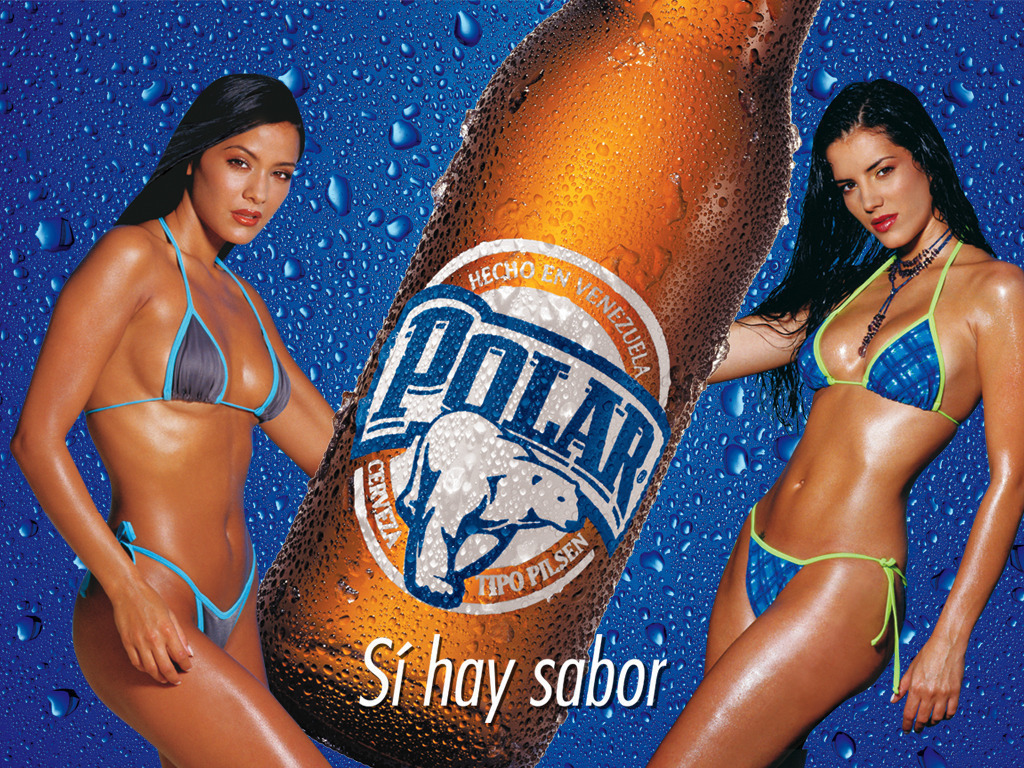














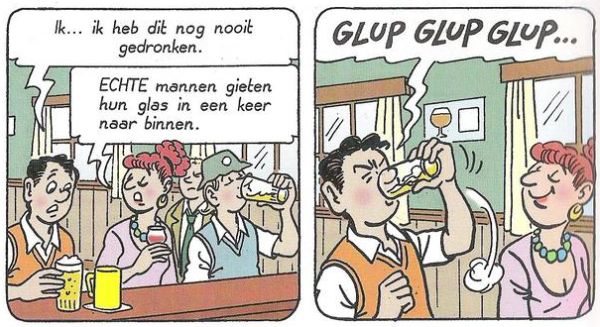


























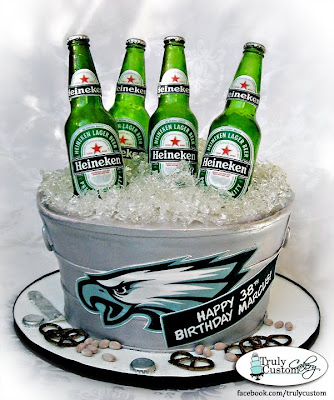











.jpg)

































































.jpg)




